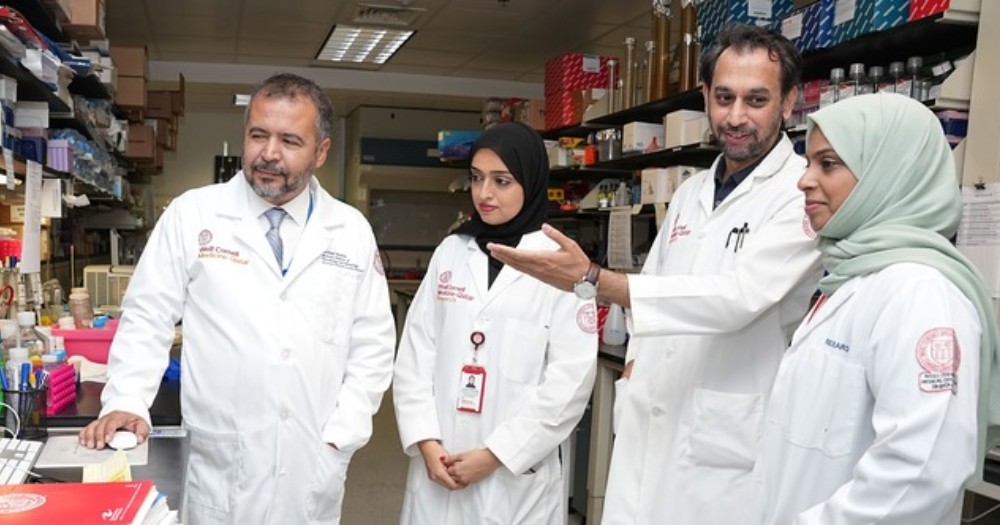WCM-Q researchers probe molecular processes that cause diabetes

Groundbreaking research conducted by Weill Cornell Medicine-Qatar (WCM-Q) has unveiled intricate details about the metabolic and genetic mechanisms that contribute to the formation of new fat cells. This discovery could significantly impact our understanding of obesity and its related complications, such as inflammation and type 2 diabetes.
How does it work?
The WCM-Q team employed CRISPR gene editing technology to explore the role of the UHRF1 protein in adipogenesis, the process by which new fat cells are formed. By deleting the gene responsible for producing UHRF1 in mouse cells, they observed a marked decrease in adipogenesis. Their advanced genomics and bioinformatics tools revealed that UHRF1 influences various molecular and cellular pathways, notably elevating levels of the cytokine TGFβ.
TGFβ, or transforming growth factor beta, is a key regulator of fibrosis-a condition characterized by tissue hardening or scarring, often seen in inflammatory diseases. The study showed that cells lacking UHRF1 had increased TGFβ levels and its downstream effects, as well as higher expression of Glycoprotein Nonmetastatic Melanoma Protein B (GPNMB). These findings were also validated in human cells, suggesting that UHRF1's regulation of TGFβ is crucial for maintaining metabolic balance.
Why does it matter?
Understanding the role of UHRF1 in adipogenesis and fibrosis opens up new avenues for therapeutic interventions in obesity and type 2 diabetes. Elevated TGFβ levels in obese individuals are associated with severe complications, including hypertension, diabetes, and tissue fibrosis. The research suggests that targeting UHRF1 and the pathways it regulates could lead to the development of new treatments aimed at mitigating these complications.
Dr. Muneera Vakayil, the lead author of the study, highlighted the potential therapeutic implications, stating, "This has been a really exciting piece of research because it presents potential therapeutic targets for type 2 diabetes. We are looking forward to conducting more research in this area to further improve our understanding of the processes which drive metabolic disorders."
The context
This research marks a significant milestone in the careers of the WCM-Q team, particularly for Dr. Vakayil, whose work forms part of her PhD dissertation at Hamad Bin Khalifa University. The collaborative effort included contributions from multiple experts in microbiology, immunology, genetic medicine, and bioinformatics.
Dr. Nayef Mazloum, an assistant professor at WCM-Q, praised the study: "This paper dramatically enhances our understanding of some very intricate molecular processes that underpin obesity and type 2 diabetes, which pose a serious threat to the health of a great many people all over the world. Furthermore, these discoveries provide important new leads for us to follow in our ongoing mission to develop a truly comprehensive understanding of metabolic disorders."
The study was supported by the Biomedical Research Program (BMRP) at WCM-Q, funded by Qatar Foundation, and has been published in the prestigious journal, Scientific Reports. The full paper, titled "The E3 ubiquitin-protein ligase UHRF1 promotes adipogenesis and limits fibrosis by suppressing GPNMB-mediated TGF-β signaling," is available for those interested in a deeper dive into the findings.
💡Did you know?
You can take your DHArab experience to the next level with our Premium Membership.👉 Click here to learn more
🛠️Featured tool
 Easy-Peasy
Easy-Peasy
An all-in-one AI tool offering the ability to build no-code AI Bots, create articles & social media posts, convert text into natural speech in 40+ languages, create and edit images, generate videos, and more.
👉 Click here to learn more


